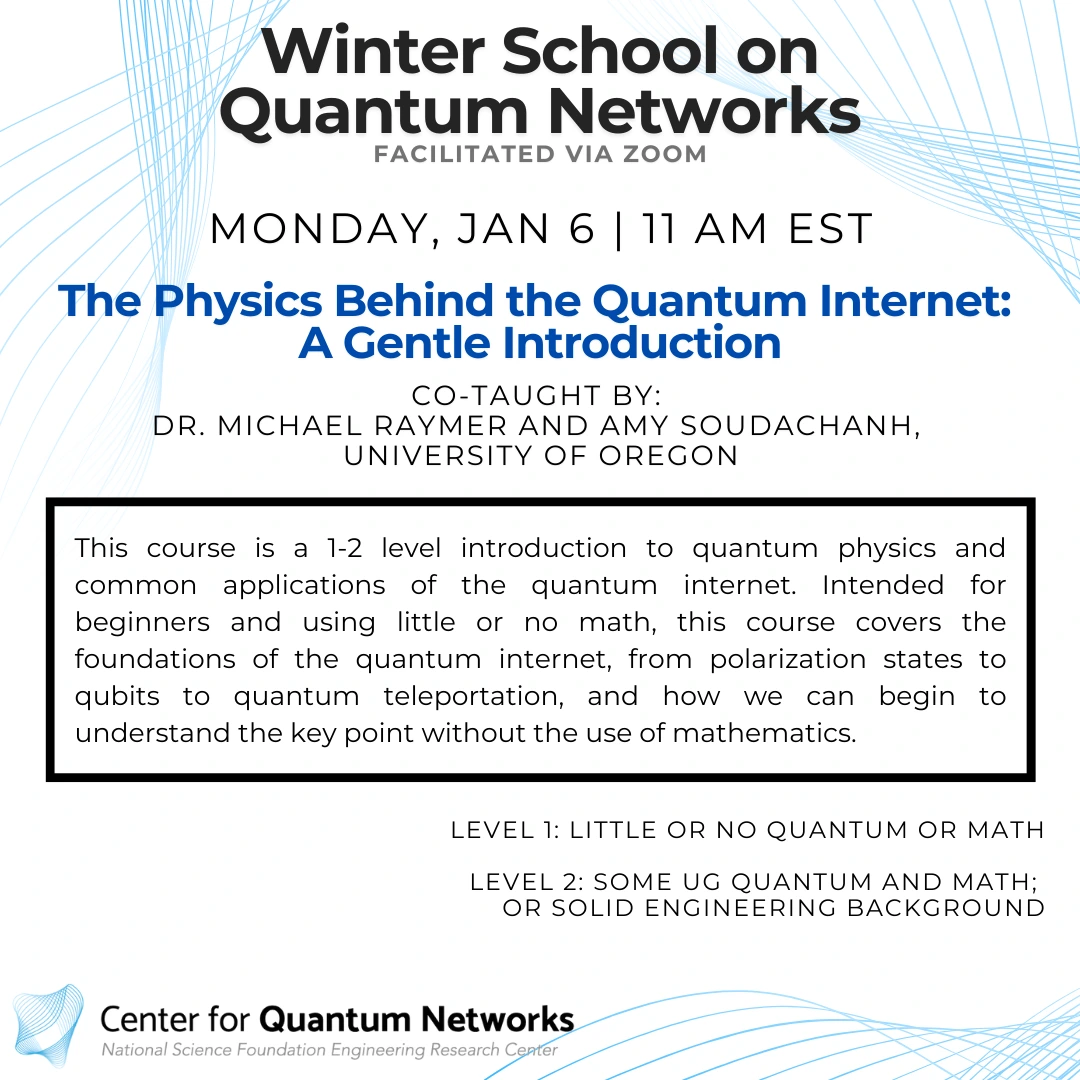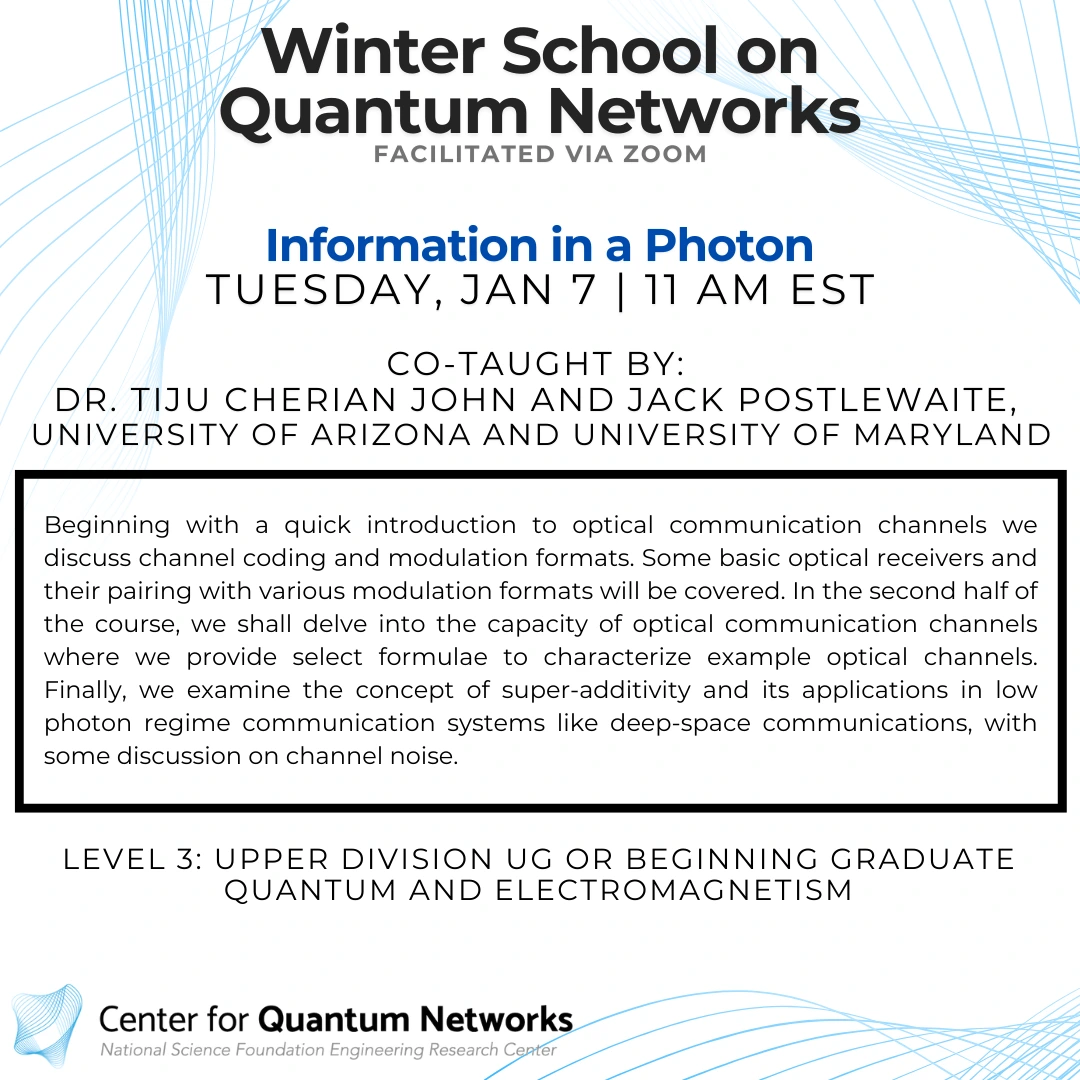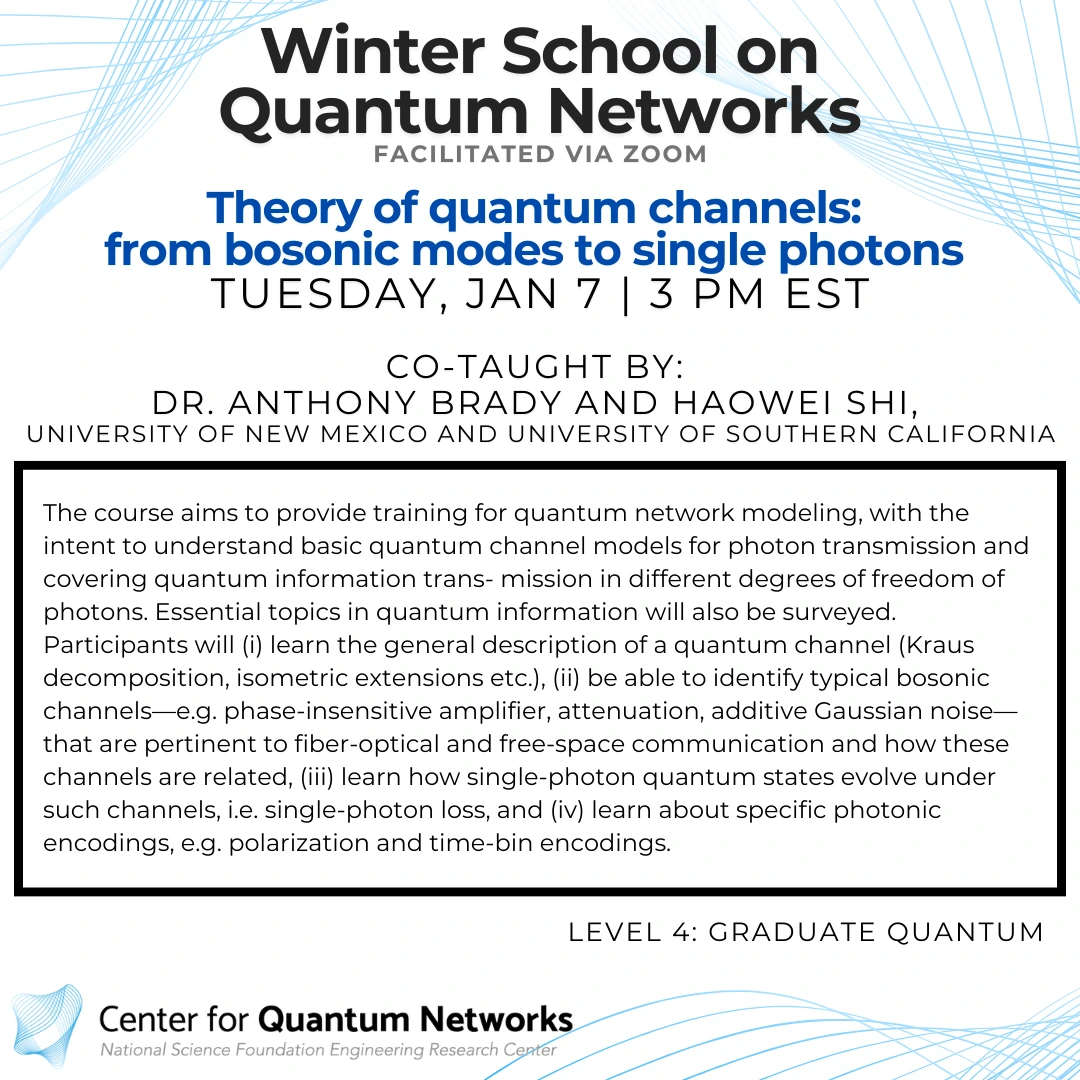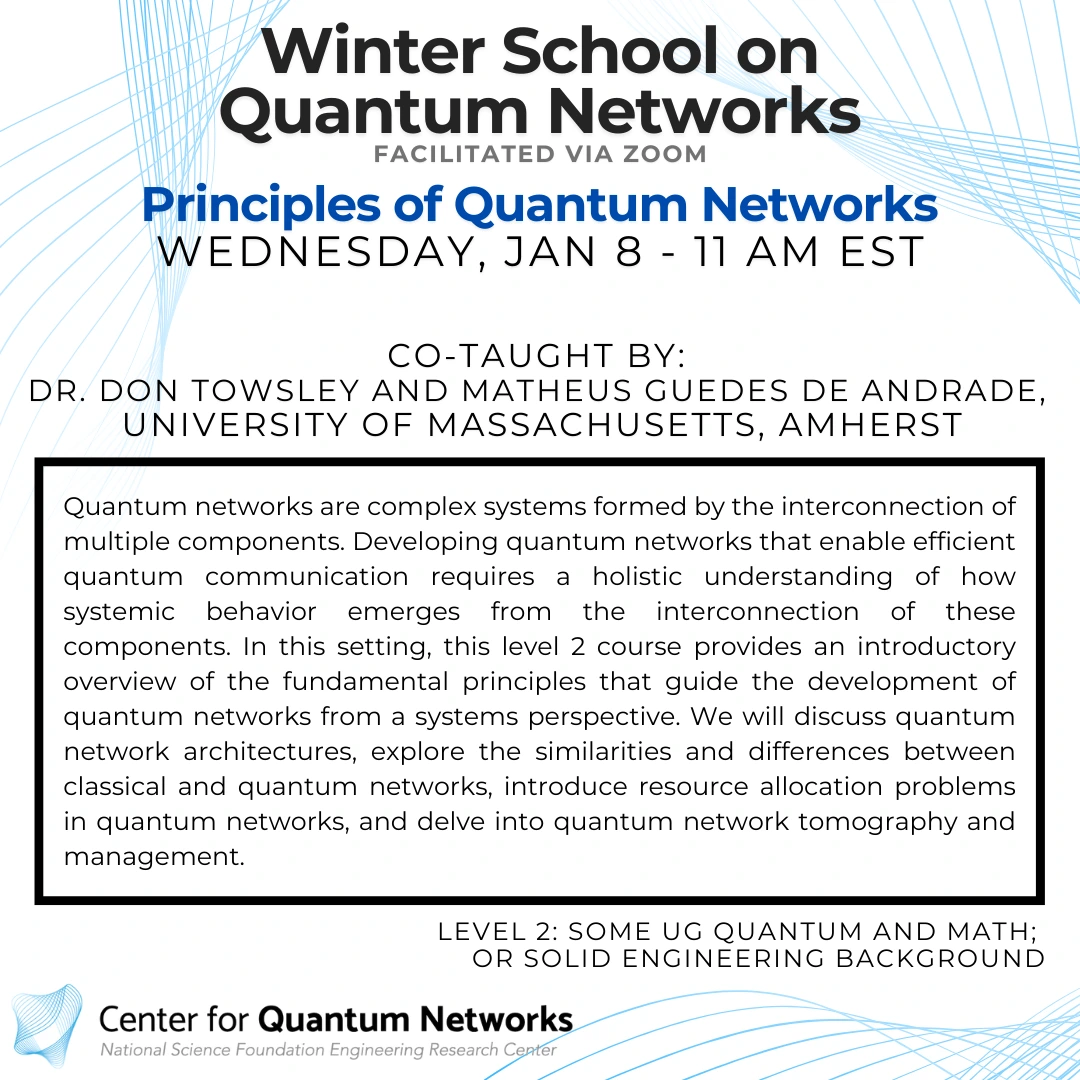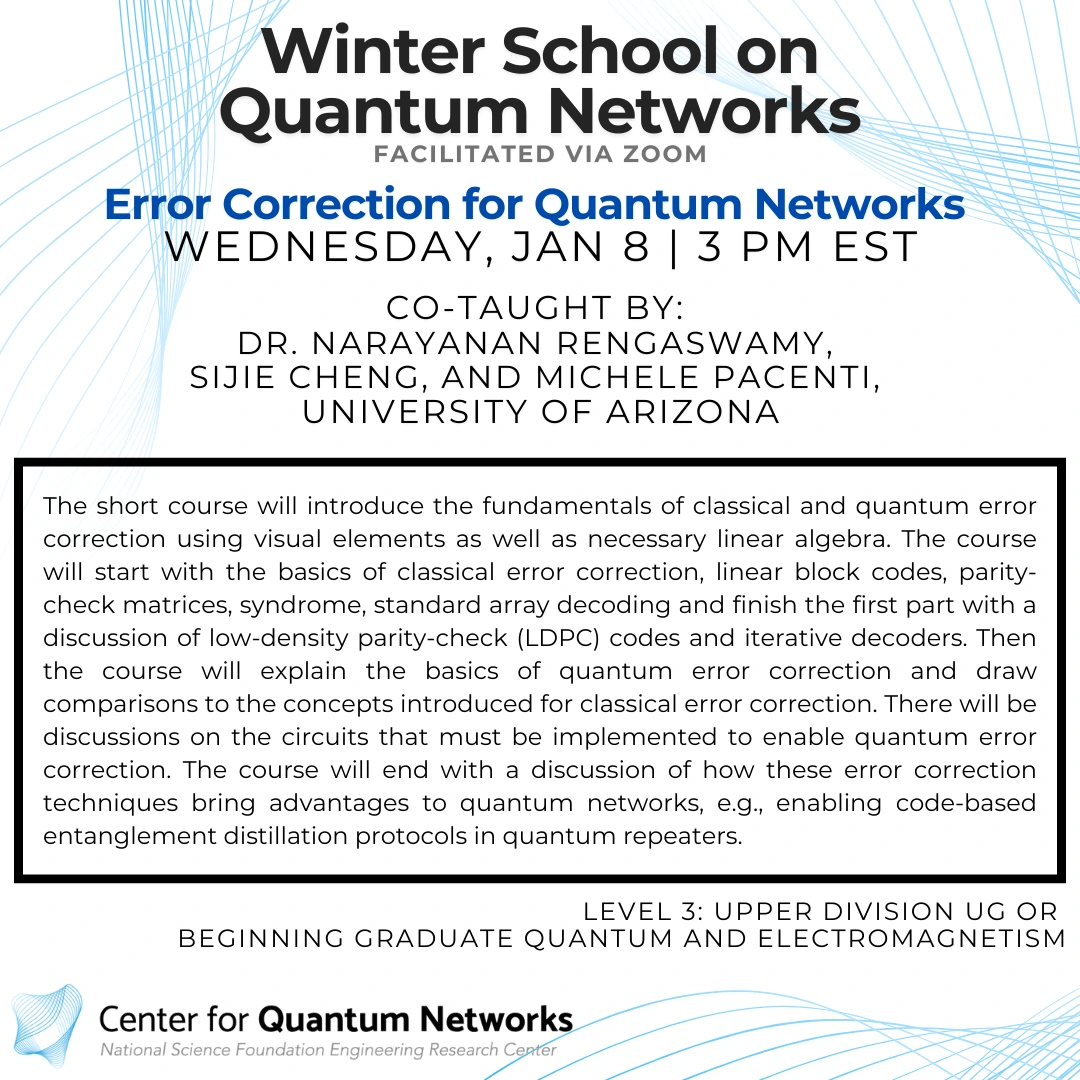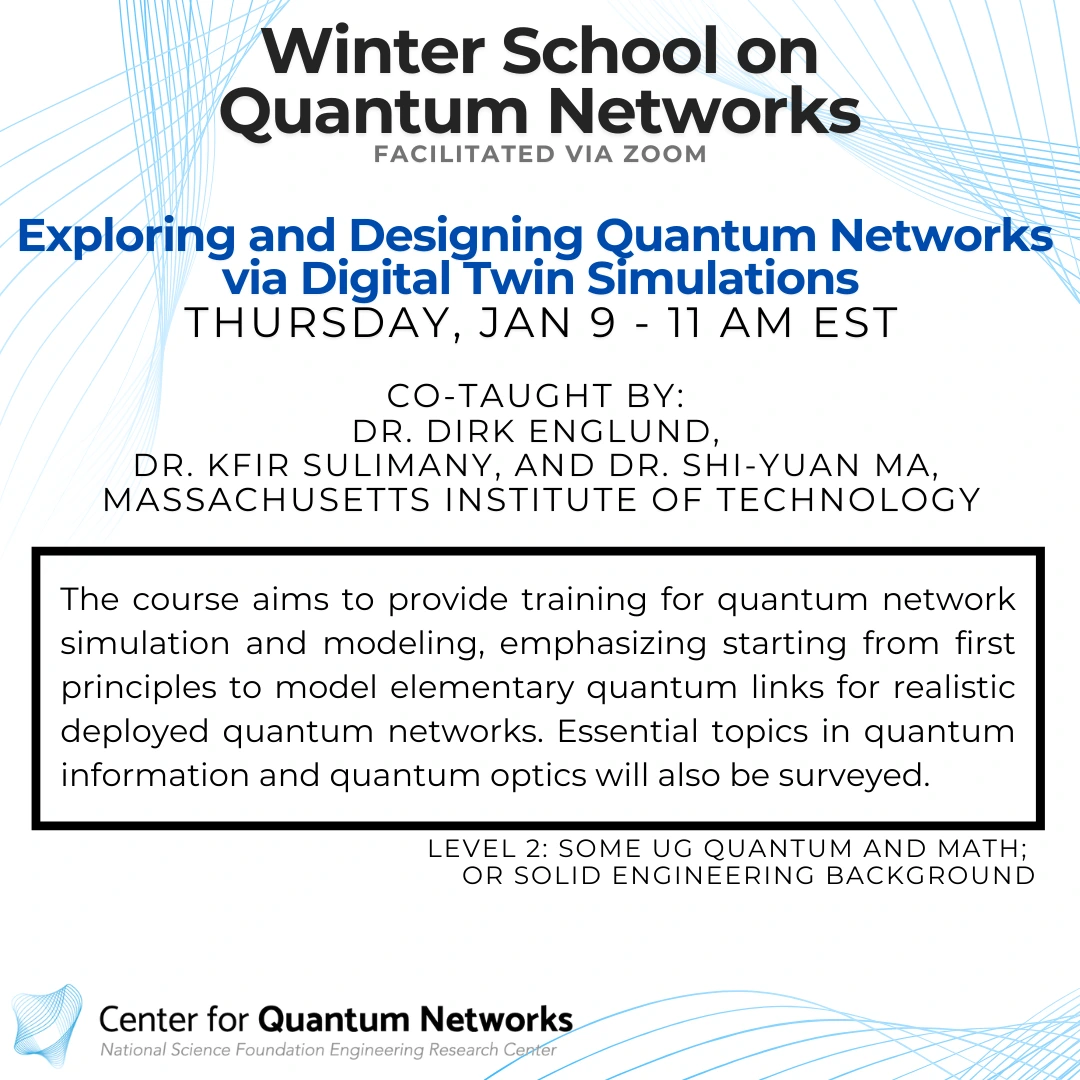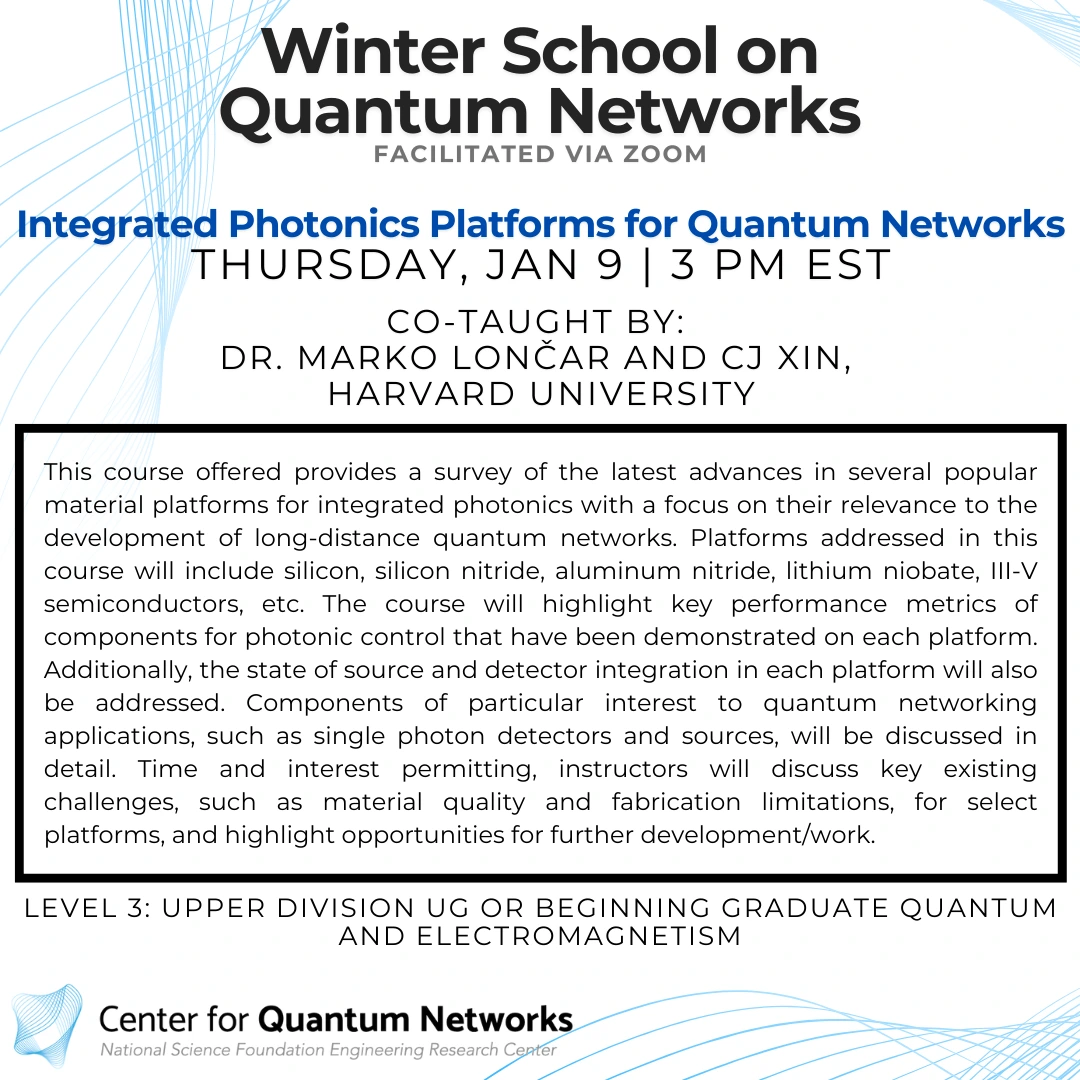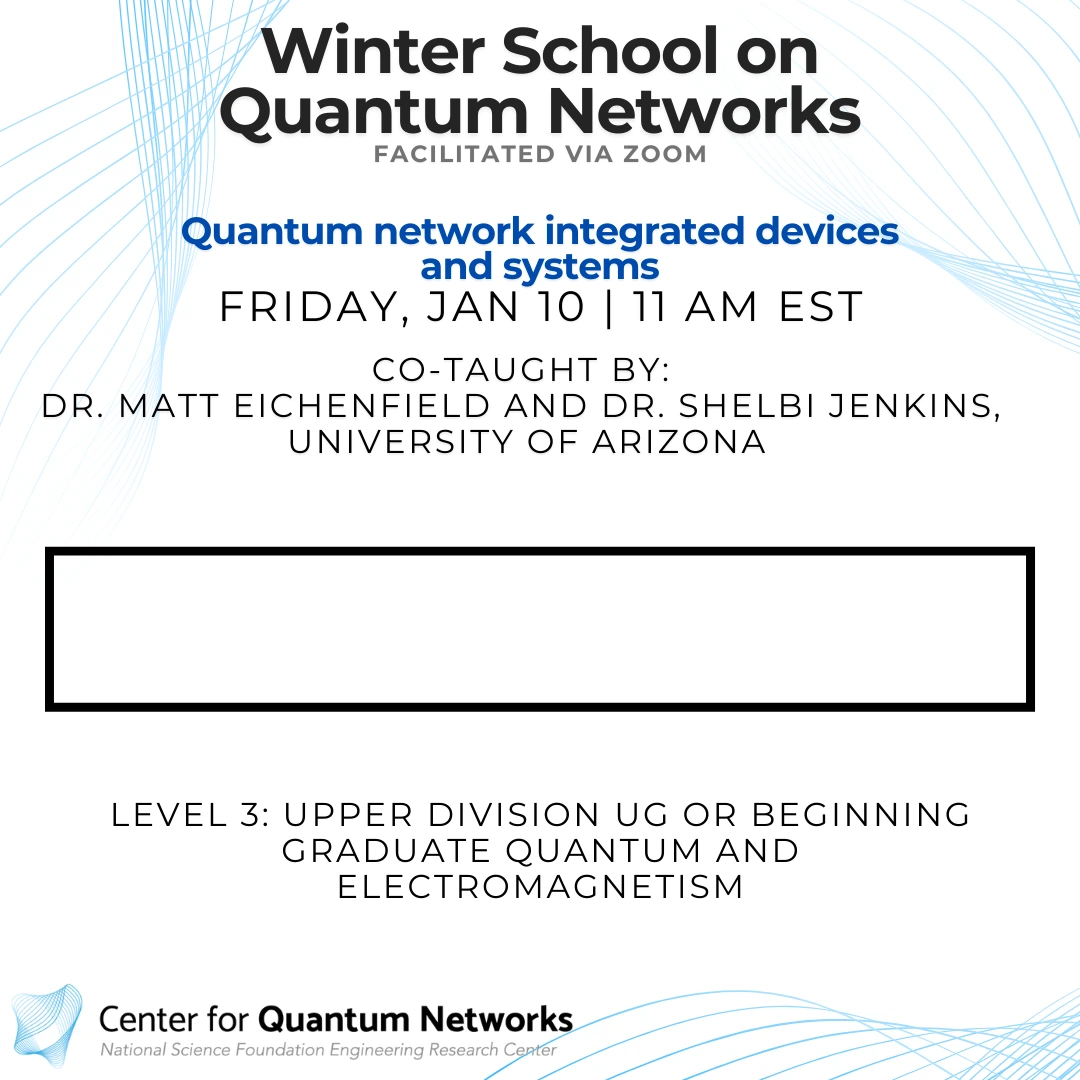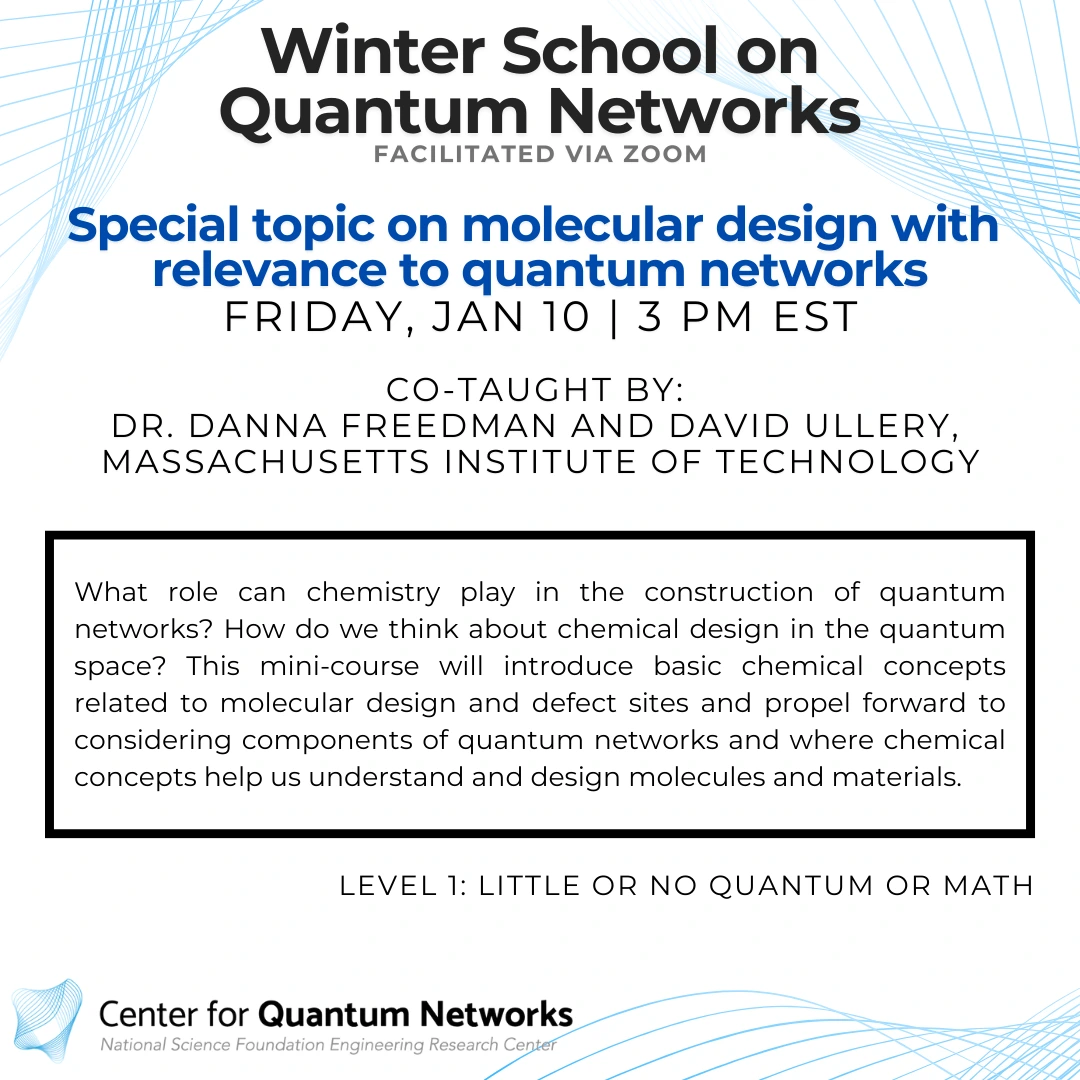January 6-10 2025 | Facilitated via Zoom
Course recordings can be found at:
https://www.youtube.com/@centerforquantumnetworks/playlists
The goal of the Winter School is to provide introductory tutorials at all levels in topics that are new to the participants, who include CQN students, postdocs, faculty, CQN industry partners, other outside qualified persons (including students at non-CQN schools), and industry and government scientists.
Each course is co-developed and co-taught by two people – a lead instructor and a co-instructor. Co-instructors are graduate students and postdocs. This arrangement, based on a program developed a decade ago by Michael Raymer and Judith Eisen (The Science Literacy Program at University of Oregon, https://scilit.uoregon.edu), has two purposes: to mentor students who wish to learn best practices in teaching under the mentorship of an experienced instructor, and to improve the quality of the short course by adopting best practices in inquiry-based teaching with the active participation of the co-instructor.
Detailed Course Descriptions:
The Physics Behind the Quantum Internet: A Gentle Introduction
Michael Raymer and Amy Soudachanh
This course is a 1-2 level introduction to quantum physics and common applications of the quantum internet. Intended for beginners and using little or no math, this course covers the foundations of the quantum internet, from polarization states to qubits to quantum teleportation, and how we can begin to understand the key point without the use of mathematics.
Getting up to Speed on Quantum Networks: Modes, States, Transformations and Measurements
Saikat Guha and Prajit Dhara
The learning goals of this course are to absorb the basic theory and concepts of quantum optics needed to understand how a quantum network works, emphasizing few-photon states as carriers of quantum information. Topics include Electromagnetic Modes and their Linear Transformations; Quantization, Single- and Two-photon States; Two-photon entangled states by spontaneous parametric down conversion; Bell-State measurements; distributing entanglement.
Information in a Photon
Tiju Cherian John & Jack Postlewaite
Beginning with a quick introduction to optical communication channels we discuss channel coding and modulation formats. Some basic optical receivers and their pairing with various modulation formats will be covered. In the second half of the course, we shall delve into the capacity of optical communication channels where we provide select formulae to characterize example optical channels. Finally, we examine the concept of super-additivity and its applications in low photon regime communication systems like deep-space communications, with some discussion on channel noise.
Theory of quantum channels: from bosonic modes to single photons
Anthony Brady and Haowei Shi
The course aims to provide training for quantum network modeling, with the intent to understand basic quantum channel models for photon transmission and covering quantum information trans- mission in different degrees of freedom of photons. Essential topics in quantum information will also be surveyed. Participants will (i) learn the general description of a quantum channel (Kraus decomposition, isometric extensions etc.), (ii) be able to identify typical bosonic channels—e.g. phase-insensitive amplifier, attenuation, additive Gaussian noise—that are pertinent to fiber-optical and free-space communication and how these channels are related, (iii) learn how single-photon quantum states evolve under such channels, i.e. single-photon loss, and (iv) learn about specific photonic encodings, e.g. polarization and time-bin encodings.
Principles of Quantum Networks
Don Towsley and Matheus Guedes De Andrade
Quantum networks are complex systems formed by the interconnection of multiple components. Developing quantum networks that enable efficient quantum communication requires a holistic understanding of how systemic behavior emerges from the interconnection of these components. In this setting, this level 2 course provides an introductory overview of the fundamental principles that guide the development of quantum networks from a systems perspective. We will discuss quantum network architectures, explore the similarities and differences between classical and quantum networks, introduce resource allocation problems in quantum networks, and delve into quantum network tomography and management.
Resources: slides
Error Correction for Quantum Networks
Narayanan Rengaswamy and Michele Pacenti and Sijie Cheng
The short course will introduce the fundamentals of classical and quantum error correction using visual elements as well as necessary linear algebra. The course will start with the basics of classical error correction, linear block codes, parity-check matrices, syndrome, standard array decoding and finish the first part with a discussion of low-density parity-check (LDPC) codes and iterative decoders. Then the course will explain the basics of quantum error correction and draw comparisons to the concepts introduced for classical error correction. There will be discussions on the circuits that must be implemented to enable quantum error correction. The course will end with a discussion of how these error correction techniques bring advantages to quantum networks, e.g., enabling code-based entanglement distillation protocols in quantum repeaters.
Resources: slides
Integrated Photonics Platforms for Quantum Networks
Marko Lončar and CJ Xin
This course offered provides a survey of the latest advances in several popular material platforms for integrated photonics with a focus on their relevance to the development of long-distance quantum networks. Platforms addressed in this course will include silicon, silicon nitride, aluminum nitride, lithium niobate, III-V semiconductors, etc. The course will highlight key performance metrics of components for photonic control that have been demonstrated on each platform. Additionally, the state of source and detector integration in each platform will also be addressed. Components of particular interest to quantum networking applications, such as single photon detectors and sources, will be discussed in detail. Time and interest permitting, instructors will discuss key existing challenges, such as material quality and fabrication limitations, for select platforms, and highlight opportunities for further development/work.
Quantum network integrated devices and systems
Matt Eichenfield and Shelbi Jenkins
Special topic on molecular design with relevance to quantum networks
Danna Freedman and David Ullery
What role can chemistry play in the construction of quantum networks? How do we think about chemical design in the quantum space? This mini-course will introduce basic chemical concepts related to molecular design and defect sites and propel forward to considering components of quantum networks and where chemical concepts help us understand and design molecules and materials.
Levels of Background Knowledge:
Level 1: little or no quantum or math
Level 2: some UG quantum and math; or solid engineering background
Level 3: upper division UG or beginning graduate quantum
Level 4: graduate quantum
Backgrounds in the following areas may be useful:
- Nonlinear Algebra
- Nonlinear optics
- Introduction to Quantum Information and Computation
- Lasers and Solid-State Devices
- Quantum Information Theory
- Optical Physics Experiment
- Quantum Algorithms
- Statistical optics
- Matlab, C++, Python
- Optical communication systems
- Quantum Mechanics
- Linear systems theory
- Electromagnetic Waves
- Probability and random processes
- Statistical Mechanics
- Error Correction Coding
- Foundation of Quantum Optics
- Computer Networks

